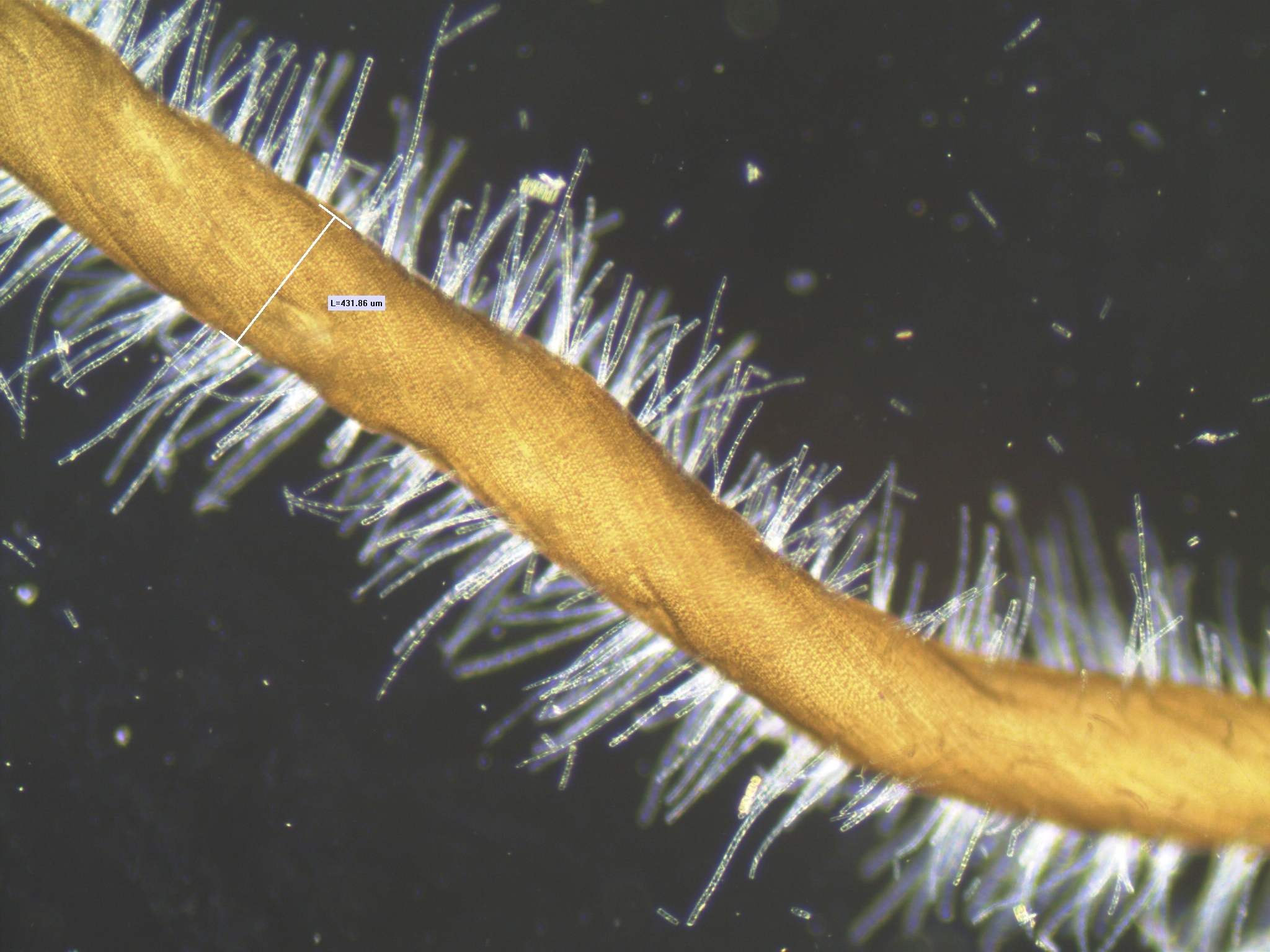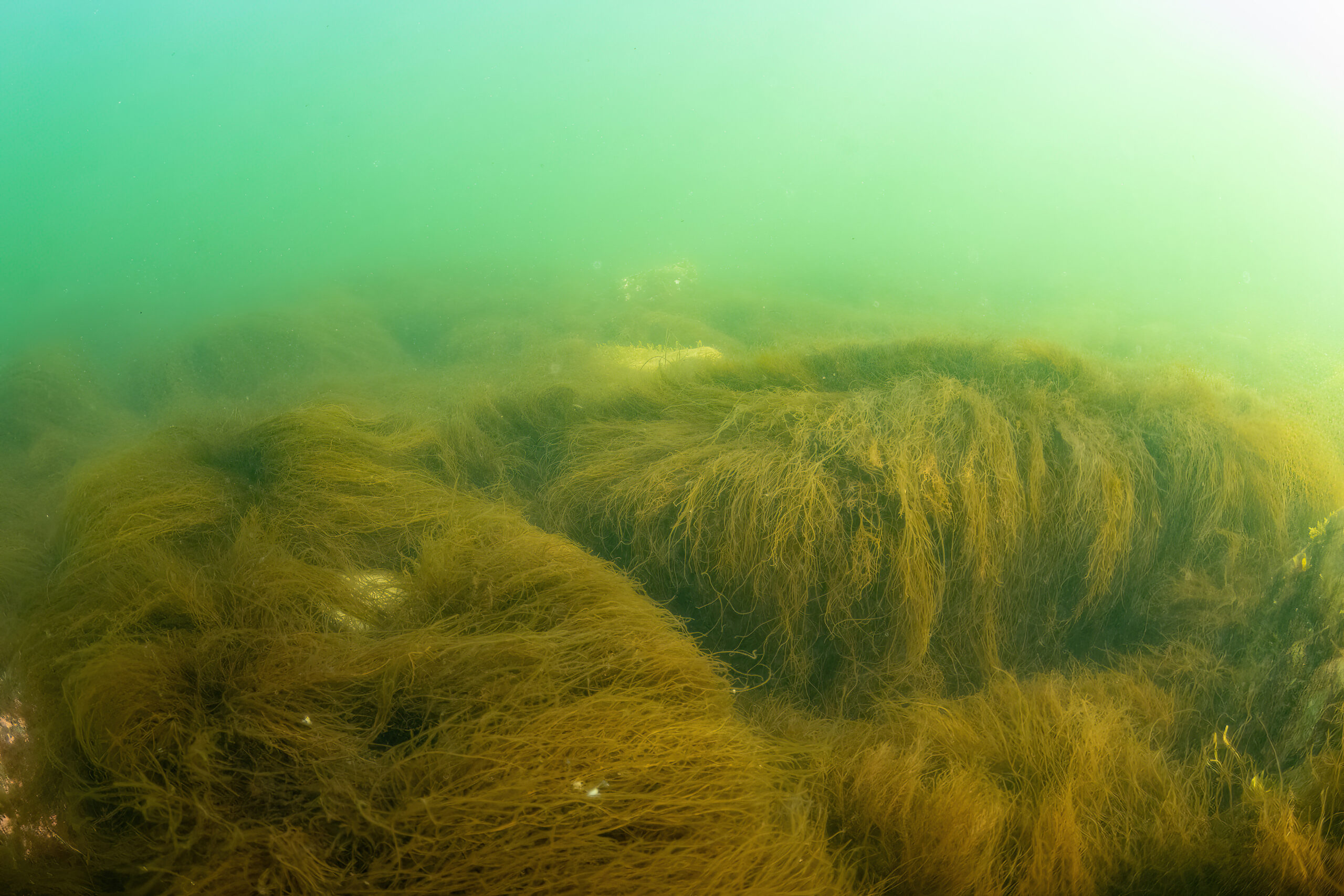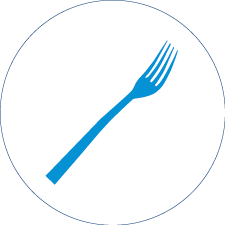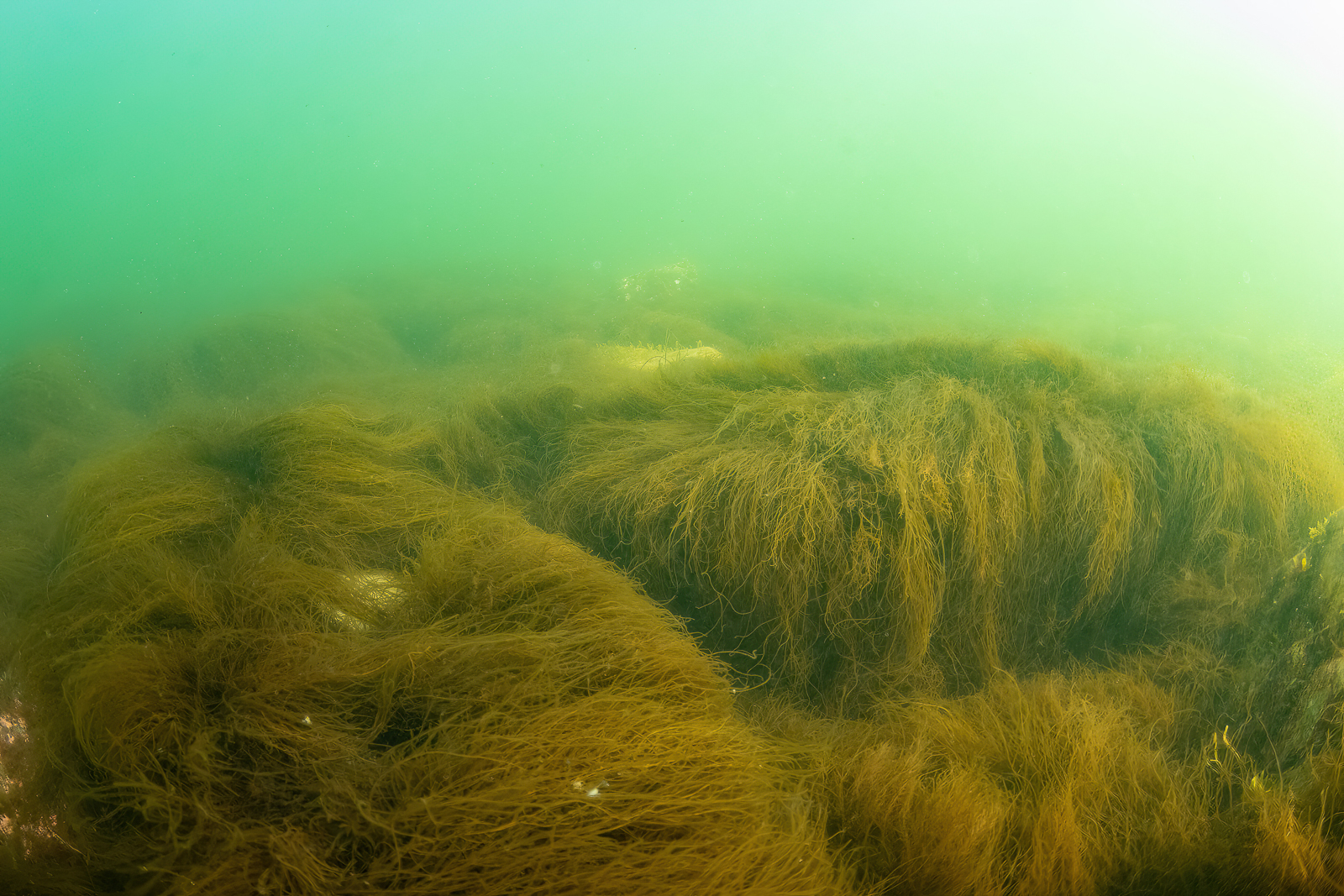
SIZE:
From 4 to 5 m long.
LIFE EXPECTANCY:
Less than one year.
LIFE CYCLE:
The sea lace releases its spores from August to November and dies in late autumn.
The released spores settle to the sea bottom, where they germinate. Over winter, male and female reproductive cells are produced for propagation. At the end of winter, the fertilized eggs develop into new seaweed in spring.
The sea lace first grows from its base when young, then from its extremities as an adult.

In summer, sea lace becomes covered with short, colourless hairs.
Credit : Éric Tamigneaux, photo taken in 2014.
This brown alga has fronds that look like long threads, often intertwined. Having yellowish-brown to dark brown fronds, they become covered with short, colourless hairs in summer. Each alga has 1 to 15 slimy, unbranched fronds, which float because of their hollow, gas-filled stems. The alga’s holdfast is very small.
Coastal zone, up to 20 m deep.
The sea lace favours submerged but sheltered environments near river mouths and in the shallow sea lagoons of the Magdalen Islands. It easily tolerates variations in temperature and salinity.
The sea lace adheres to surfaces such as pebbles that are slightly buried in the sand, empty mollusc shells and even on other algae. It can also serve as a support for other plants.

The sea lace adheres to surfaces such as pebbles that are slightly buried in the sand, empty mollusc shells and even on other algae. It can also serve as a support for other plants.
Credit : Richard Larocque, photo taken in Les Méchins.
PREYS:
CO2
Solar energy
PREDATORS:
Herbivorous molluscs
Shrimp
MACHINES:
Hand harvesting.
REGULATIONS:
Permit required.
Sea lace is not yet harvested commercially in Québec. However, ÉPAQ students and teachers carried out successful cultivation trials in 2016.
Unusual nicknames
This seaweed has a huge assortment of common names in English. Some names, such as dead man’s rope, may be a little gruesome. Others are more fanciful, such as mermaid’s tresses.
Sea lace is a Smarter seafood-listed species.
BENEFITS:
Rich in minerals, vitamins and especially iodine, which is essential for the thyroid gland. However, excessive intake may be contraindicated for some people, such as pregnant and breastfeeding women, children and people with hyperthyroidism. It is therefore recommended to include this seaweed in a varied diet.
Preliminary studies suggest that its use may help reduce cholesterol.
LET’S COOK:
Crunchy texture like fresh vegetables. Fresh, mineral flavour, slightly bitter.
Smooth cord weed also tastes good when dried.
OUR CULINARY ADVICE:
- Add raw to salads, soups or stir-fries.
- Use dried in drinks or as a seasoning.
- Given its shape, it can also be used to replace noodles.
The waters of the St. Lawrence are known for their good quality. However, as algae absorb the elements present in the water to grow, it is preferable to ensure that the harvesting site is clean before eating this species fresh.






